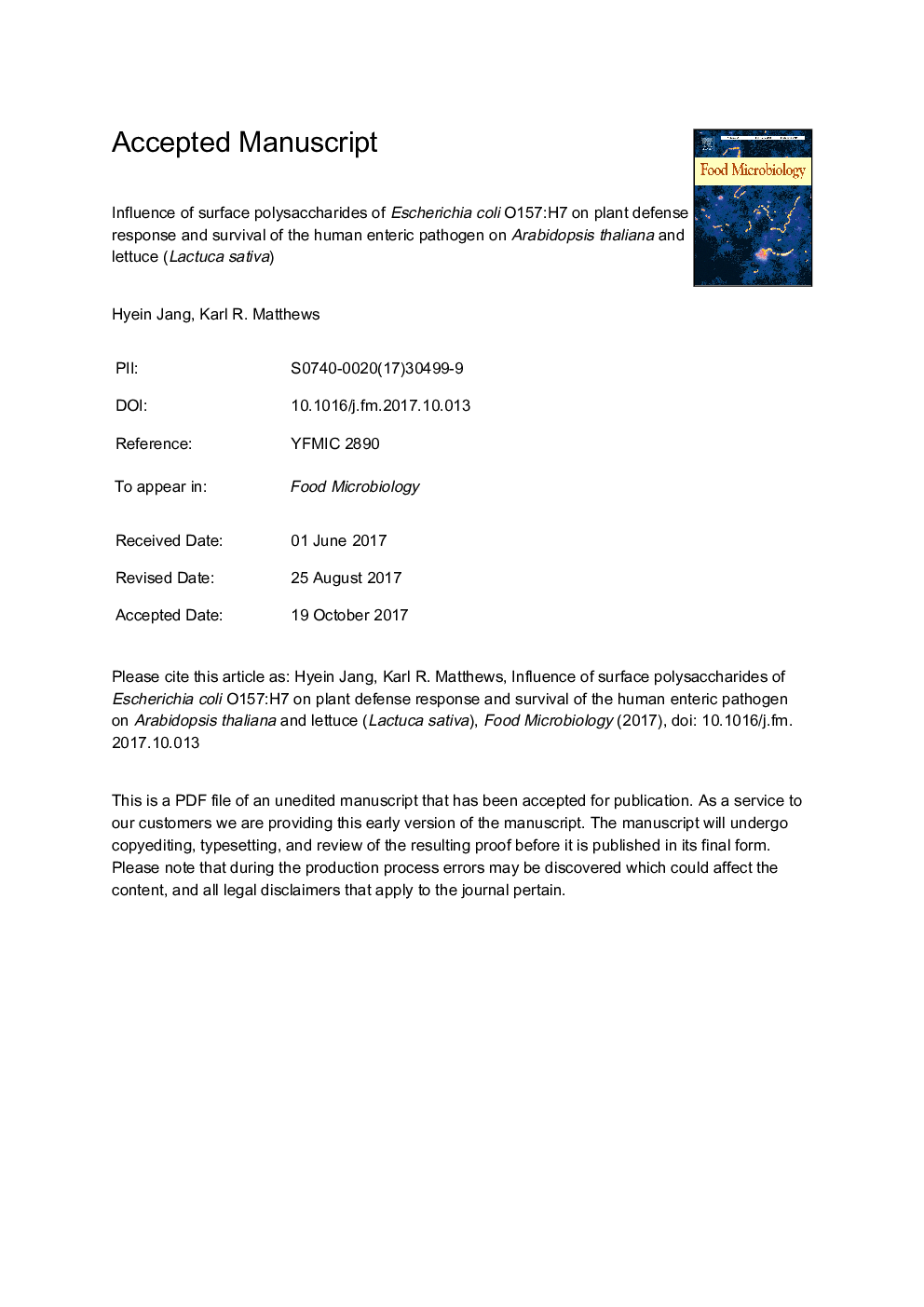| Article ID | Journal | Published Year | Pages | File Type |
|---|---|---|---|---|
| 8843625 | Food Microbiology | 2018 | 36 Pages |
Abstract
This study aimed to determine the influence of bacterial surface polysaccharides (cellulose, colanic acid, and lipopolysaccharide; LPS) on the colonization or survival of Escherichia coli O157:H7 on plants and the plant defense response. Survival of E. coli O157:H7 were evaluated on Arabidopsis thaliana and romaine lettuce as a model plant and an edible crop (leafy vegetable), respectively. The population of the wild-type strain of E. coli O157:H7 on Arabidopsis plants and lettuce was significantly (P < 0.05) greater compared with the colanic acid-deficient and LPS-truncated mutants on day 1 and day 5 post-inoculation. This result indicates that colanic acid and LPS structures may contribute to the ability of bacterial survival or persistence on plants. The wild-type strain of E. coli O157:H7 produced approximately twice the amount (P < 0.05) of capsular polysaccharide (CPS) than the colanic acid and LPS-truncated mutants. The significantly lower production of CPS was associated with significantly greater (2-fold) expression of pathogenesis-related gene (PR1) compared with the wild-type and cellulose-deficient mutant (P < 0.05). Collectively, the results of this study may suggest that specific surface polysaccharides of E. coli O157:H7 differentially induce the plant defense response, consequently affecting the survival of the human pathogen on plants. The survival and persistence of E. coli O157:H7 was similar on Arabidopsis and lettuce regardless of day post-inoculation.
Keywords
Related Topics
Life Sciences
Agricultural and Biological Sciences
Food Science
Authors
Hyein Jang, Karl R. Matthews,
